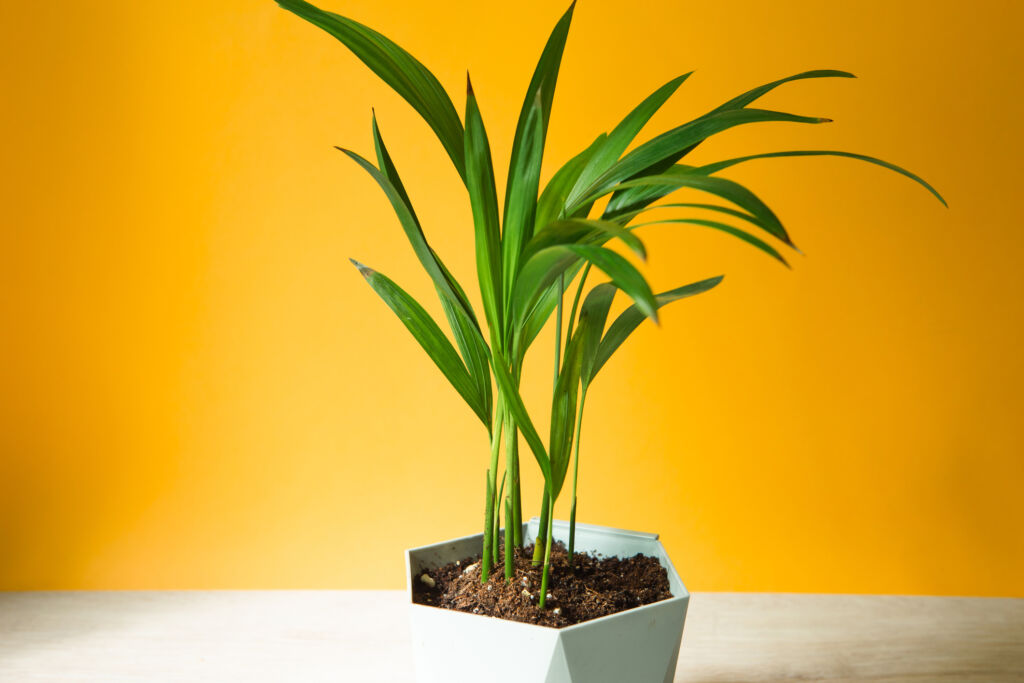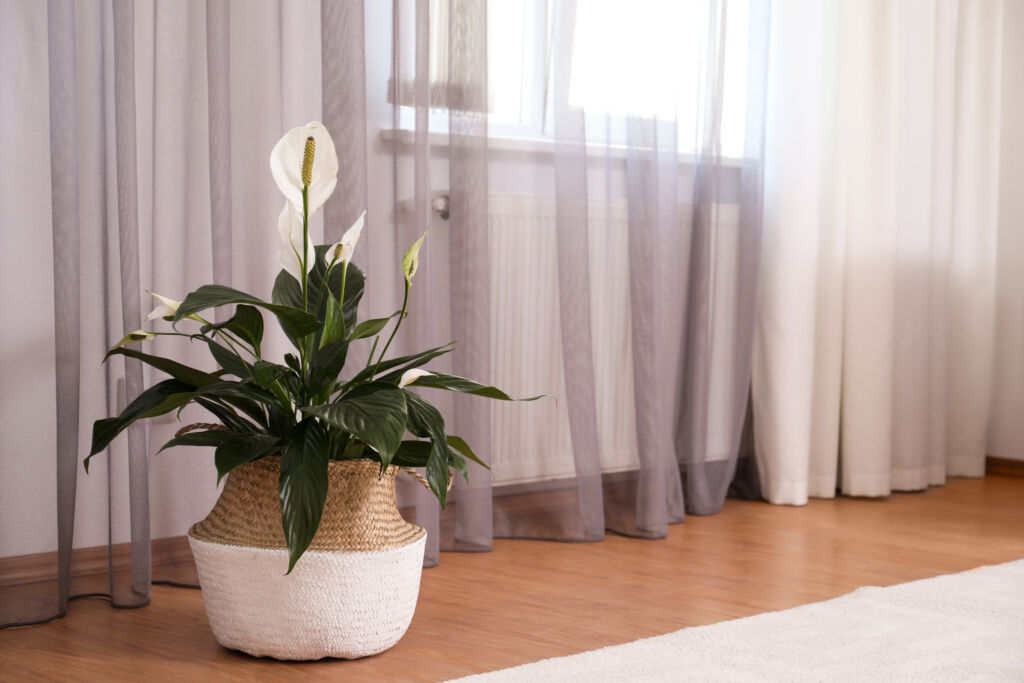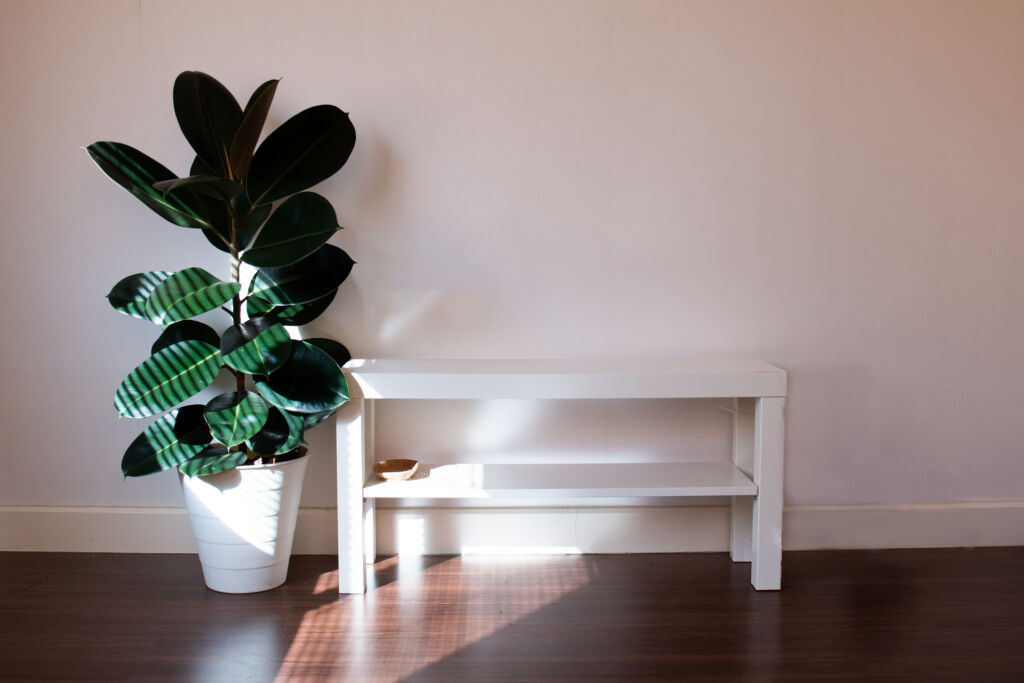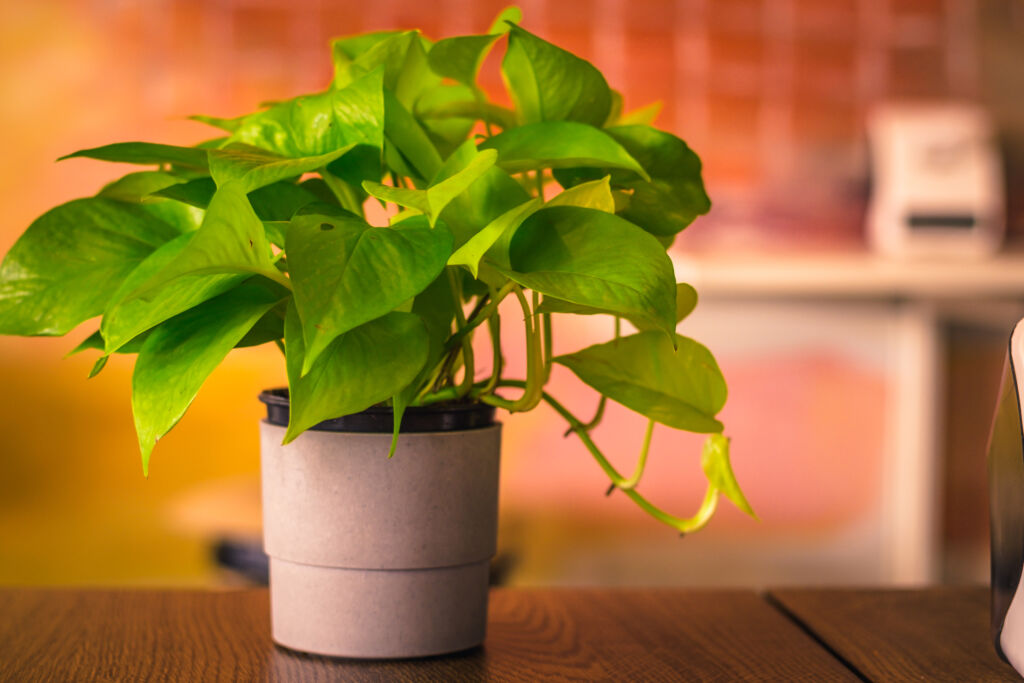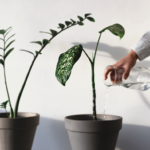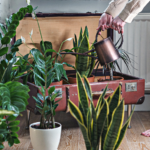HousePlantJoy is supported by our audience. When you purchase through one of our links, we may earn a small affiliate commission. As an Amazon Associate I earn from qualifying purchases. Your cost is not affected.
==================
Are there any houseplants that are hard to kill? Or does it take a true green thumb to keep the greenery in your home?
So you have seen a gorgeous houseplant that you couldn’t resist buying. You brought it home to add some greenery to your décor. Unfortunately, your plant died before you could see it producing beautiful leaves and stunning flowers. But it doesn’t mean you are bad at growing houseplants. All you need is to choose the suitable varieties that can thrive with a bit of neglect.
Houseplants that are hard to kill
There is a plethora of houseplant varieties that are pretty much “indestructible.” Due to their hardiness, they can stay green even if you miss watering them for weeks. In addition to their hardiness, a few houseplant species are also incredibly adaptable, making them perfect for beginners. This post will walk you through our favorite houseplants that are easy to grow and hard to kill.
So, let’s get started!
7 Houseplants That Are Hard to Kill
1. Bamboo Palm (Chamaedorea Seifrizii)
The bamboo palm is a species of palm and a member of the Arecaceae family. Native to forested regions of Central America (Mexico, Honduras, and Guatemala), this evergreen perennial is an excellent option for novice growers. It is a common houseplant and can grow up to 20 feet tall. In addition, the bamboo palm is also grown commercially in some US states, including Florida and Hawaii. Planted outside, the bamboo palm grows invasively. However, that strong trait also means it is one of the houseplants that are hard to kill.
Bamboo Palm
The plant is also commonly referred to as:
- Cane Palm
- Bamboo Palm
- Clustered Parlor
- Reed Palm
Bamboo palm is incredibly graceful and tolerant of missed feedings, lack of water, and much more. The bamboo palm can produce dense, clumping cane-like stems and feathery fronds when grown in ideal conditions. Another plus point of growing bamboo palm is that it has a slow growth rate and can take years to reach its average height. It means this evergreen perennial needs minimal care and maintenance.
Moreover, once your plant is mature, you will see it producing show-stopping flowers followed by bright-orange fruits. However, the fruit contains oxalic, which makes it toxic to humans and pets. So, make sure to wear gloves when handling.
Care Tips
Light: Since bamboo palms do well in partial shade, keep your plant near an east-facing window. In addition, if you cannot find a place with adequate natural light, you can also use artificial lights to grow bamboo palms. Moreover, it is also essential to keep your bamboo palm away from direct sunlight as it can cause yellowish color.
Watering: Keep the soil moderately moist, especially during the growing season. Liberally watering your bamboo palm is ideal. In addition, you can reduce watering during cold temperatures and allow the soil to dry out between watering.
Temperature: Bamboo palms grow well in average warm temperatures. It means if you find the temperature comfortable, it is ideal for your plant too. Remember that your bamboo palm hates cold temperatures.
Fertilizer: Feeding your bamboo palm with a balanced, liquid fertilizer once a month during the growing season is beneficial. In contrast, you should stop fertilizing it during the colder months as growth is minimal. Moreover, try to run a stream of water to flush out accumulated salt from the soil.
2. Snake Plant (Sansevieria)
The snake houseplant, one of the most commonly known and hardy houseplants, is among the houseplants that are hard to kill. Although it loves care, it endures tons of neglect and is exceptionally adaptable. In addition to strategically placing houseplants for decoration and feng shui, some varieties also offer many health benefits. The snake plant is famous for its striking look and ability to improve air quality.
Snake Plant
It is native to Africa and Asia and produces stunning evergreen sword-like leaves that grow upwards and resemble artificial foliage. Snake plants are popularly used as home décor because of their ease of care and aesthetic looks.
Moreover, snake plants are incredibly straightforward and can thrive even when neglected for weeks. In addition, these houseplants can survive in varying light conditions and drought and have only a few insect problems. NASA research shows snake plants can improve indoor air by removing toxins like benzene and formaldehyde.
Care Tips
Light: Snake plants do well under indirect but bright light with some direct sun. However, these plants are tough and can adapt to full sun while also being able to thrive in dimly lit conditions.
Watering: It is essential to let the soil dry between watering. During colder months, you can reduce watering and only water when the soil feels dry. Remember that overwatering your snake plant can trigger root rot.
Temperature: Snake plant grows well in warm temperatures. Protect your houseplant from temperatures below 50 degrees and place it away from a drought. Ideally, you should sit your plant in temperatures between 70-90 degrees.
Fertilizer: Snake plants like mild cactus fertilizer, especially during their growing season. Alternatively, you can use a balanced liquid slow-release fertilizer diluted to half strength. It is important to stop feeding your plant in the winter months.
3. ZZ Plant (Zamioculcas Zamiifolia)
ZZ plants are among the low-maintenance houseplants. These plants can easily be characterized by their broad, shiny, oval-shaped leaves that grow upwards. Hailing from East Africa, Zanzibar, and Tanzania, ZZ plants are also referred to as Zanzibar Gems because of their waxy, spotless leaves. They have incredibly deep-green leaves that, sometimes, ZZ plants are mistaken as artificial.
ZZ Plant
In addition to their ease of care, ZZ plants are incredibly hardy and slow-growing, making them ideal for novice growers. While these plants grow well in bright, indirect sunlight, ZZ plants can tolerate varying light conditions. When looking for houseplants that are hard to kill, consider the beautiful ZZ plant.
Thanks to their hardiness, ZZ plants can endure months and months of neglect and still look stunning. Previously, these plants would only be seen in planters in large office buildings and malls. However, in recent years, ZZ plants have made their way onto the shelves of hardware and big box stores where you can easily purchase one.
Furthermore, ZZ plants produce a graceful, wand-like appearance with a thick and bulbous base and tapering to a point. You will see oval-shaped leaves along the stem, making your plant look like stylized feathers. The entire ZZ plant has a shiny, waxy coating that makes it look like an artificial plant.
Care Tips
Light: ZZ plants can endure a variety of lighting conditions, which makes these plants ideal for beginners and indoor growing. However, while your plant can thrive in low light, it will turn leggy due to insufficient light. So, it is essential to sit your plant near a south-facing window. In addition, protect your ZZ plant from direct sunlight that could cause scorching leaves.
Watering: ZZ plants are hardy and incredibly drought-tolerant. They can tolerate infrequent watering due to their thick rhizomes. However, ensure to water your plant every two weeks or when the soil feels dry. Prefer less watering over overwatering to mitigate the risk of root rot.
Temperature: Your ZZ plant will thrive in average household temperatures. However, these plants hate cold temperatures (lower than 45 degrees), so do not sit your plant near drafts or in cold areas. In addition, while they don’t need humid conditions to thrive, if you’re on the dry side, consider using a humidifier to increase humidity around your plant.
Fertilizer: ZZ plants are among the houseplants that do not need regular fertilizing. However, if you want to increase your plant’s size and vigor, use an indoor plant fertilizer during its growing season.
4. Peace Lily (Spathiphyllum wallisii)
Peace lilies are among the most common houseplants that even the novice can grow indoors. Experts place them among the houseplants that are hard to kill. Straightforward to grow, they need minimal maintenance and look aesthetically beautiful. In addition, while these plants can be temperamental sometimes, once you figure out how to care for them, peace lilies make a gorgeous addition to your décor.
Peace Lily
These plants are flowering tropical, evergreen houseplants and thrive on the forest floor under dappled sunlight and consistent moisture. It means mimicking those conditions indoors is essential to keep your peace lilies happy and thriving.
Moreover, there are a variety of peace lily species within the genus. However, in general, peace lilies strike glossy, large, oval-shaped leaves followed by stunning white blooms in the spring. If you can maintain a healthy, peace lily, your plant might bloom twice a year, producing several months of flowers.
Many household species of peace lily can grow up to 1.4 feet tall, with more extensive outdoor cultivations having leaves reaching up to 6 feet. These houseplants are not cold-hardy, meaning you can grow them outdoors only in warm, humid climates.
Care Tips
Light: Keeping your peace lily near a spot with bright, indirect sunlight is ideal. An east-facing window is an excellent spot for your plant as it will get bright morning sun. Alternatively, you can place your plant near a north-facing window for adequate light. In addition, keep your peace lily from areas exposed to direct sunlight to avoid dryness.
Watering: Your peace lilies prefer underwatering to being overwatered. So, how often you should water depend on the container and how well it drains. In general, you should water your peace lily when the soil’s top has dried. In contrast, you can reduce watering in colder months but not let the soil dry out.
Temperature: Peace lilies love moist, warm environments. Avoid sitting your plant near drafts and in temperatures below 55 degrees. Ideally, a temperature ranging from 65-80 is perfect for your houseplant.
Fertilizer: Frequent feeding is beneficial for your plant. It will encourage healthy growth and dense seasonal flowering. So, try to feed your plant once a week in the summer or use a slow-release fertilizer. In addition, do not feed your plant in colder months.
5. Rubber Plant (Ficus Elastica)
Native to Southeast Asia, southern China, and Indonesia, the rubber plant is another of our houseplants that are hard to kill. The rubber plant shows well in any home as an evergreen tropical tree species. It is a popular ornamental plant, especially if you want a hardy and easy-to-grow plant that can reach staggering heights within a few years. The rubber plant also has a rich history as, along with Hevea brasiliensis, the latex sap of the rubber plant has been used to make rubber.
Rubber Plant
Moreover, these plants produce shiny, glossy leaves that look stunning in homes. While immature plants start small, they will quickly fill empty corners of your home. In addition, while a rubber plant can grow up to 30 meters, indoor varieties have a manageable height, and you can restrict their size with regular pruning.
A couple of decades ago, rubber plants were prevalent, but people started living in small apartments and modern homes. Space became a significant issue, and the rubber plants were the first things to go. Eventually, they fell out of trend and became hard to find.
Fortunately, they have bounced back for a few years now and are once again considered prominent houseplants. Rubber plants are straightforward to grow and can endure tons of neglect.
Care Tips
Light: Like most houseplants in their genus, rubber plants like to soak in bright, diffused light. These plants can endure the morning sun but should be protected from harsh sun rays. Despite their hardiness, lack of light will make your plan leggy, leaf-loss, and dull leaves color.
Watering: Rubber plants love frequent watering and like to sit in steadily moist soil. You should also keep your houseplant away from drought and dryness to maintain healthy growth. In addition, check the soil’s moisture; if it feels dry in the first few inches, it’s time to water your plant.
Temperature: Like most ficus species, rubber plants are prone to cool drafts. An unhealthy rubber plant will be leggy with yellowish-brown leaves. So, try to sit your rubber plant in moderate to warm temperatures ranging from 60-65 degrees Fahrenheit. You can also use a humidifier to maintain humidity.
Fertilizer: A weak liquid fertilizer throughout the growing season is beneficial. A healthy rubber plant wants heavy feeding. However, some experts suggest fertilizing your indoor plant lightly to prevent root-bound and stretching.
6. Guiana Chestnut (Pachira Aquatica)
Also referred to as the Money Tree plant, Guiana chestnut has a reputation for being one of the houseplants that are hard to kill. In fact, most consider it one of the easiest plants to grow indoors. These plants typically bring greenery to homes, offices, restaurants, and lobbies. They are low-maintenance, pet-friendly plants and produce hand-shaped leaves. In addition, they also have large, green pods holding edible chestnut-like seeds.
Guiana Chestnut
Guiana Chestnut is native to Central America and can grow up to 60 feet outdoors. However, you can also grow it as a bonsai or indoors to maintain a manageable height. There’s another similar specie, “saba tree” or “Pachira Glabra,” which is often sold as a money tree. However, the two varieties produce different fruits and flowers.
Moreover, while growing Guiana Chestnut is unlikely to flower, you can still enjoy its show-stopping, hand-shaped leaves. These plants are also among the favorite feng shui plants and are believed to bring financial fortune when placed in the southeast corner of your home.
Care Tips
Light: While outdoor Guiana Chestnut plants can endure direct sunlight, indoor plants have specific light needs. You should place your indoor money tree in indirect bright to medium light for at least eight hours daily. Alternatively, if your home doesn’t have a sunny window, you can use artificial fluorescent lights to grow these plants.
Watering: These plants appreciate getting frequent and consistent watering. Generally, you should water your plant when the top inch of the soil is dry. In addition, your plant will need more frequent watering, especially during spring and summer, and less watering in colder months.
Temperature: Money trees love sitting in mild temperatures with high humidity. So, you should keep your plant in temperatures ranging from 65-75 degrees Fahrenheit and away from cold drafts. If the environment is dry, use a pebble tray filled with water to increase humidity around your plant.
Fertilizer: Feeding your money tree plant is beneficial. You can feed it throughout the spring and summer once a month during its active growing season. Similarly, bi-monthly fertilizing during colder months is also essential for healthy growth.
7. Pothos (Epipremnum aureum)
One of the elegant and easiest houseplants to grow indoors, pothos is often discounted in favor of fancier plants like orchids. Despite their lack of blooms, these topical vines have an array of varieties, striking different patterns and foliage colors that attract a range of decors and tastes. As one of the hardest and easiest houseplants with almost foolproof characteristics, pothos can forgive tons of neglect; these plants are perfect, even for beginners. Consider these leafy beauties when you seek houseplants that are hard to kill.
Pothos Plant
In addition, pothos plants are also virtually pest-free and can thrive even in dimmer light conditions, making them ideal for the darkest corners of your home. The trailing vine plants are native to the South Pacific’s Solomon Islands and feature pointed, heart-shaped green leaves variegated with yellow, pale green, or white striations.
It is worth mentioning that despite their show-stopping appearance, pothos is toxic to pets. Due to their long trailing stems and aerial roots, these plants make pothos a versatile option for plant stands, hanging baskets, and bookshelves. In addition to their visually aesthetic appearance, pothos is famed for their ability to improve air quality, allowing you to breathe fresh.
Care Tips
Light: While pothos can thrive in the sun and shade alike, you should watch if your plant is getting too much of either. Indoor pothos loves bright, indirect light. Variegated varieties sometimes face leaf-loss of patterns and develop all-green foliage due to inadequate light. However, you can move your plant to a brighter location which will restore its variegation.
Watering: You should let your pothos soil dry out completely between watering. Continuous dump soil can trigger root rot and black-spotted leaves. Your plant will indicate when it is thirsty. However, don’t wait until your plant’s leaves start wilting. If you see dry brown edges, it means your plant has been thirsty for so long.
Temperature: Pothos love to sit in temperatures above 50 degrees Fahrenheit. However, they can still thrive in rooms with average temperatures between 65-75 degrees Fahrenheit. In addition, they like high humidity, so you may want to use a humidifier around your plant. Alternatively, you can move your pothos plant to a damp spot, such as a bathroom or kitchen.
Fertilizer: These plants don’t need heavy fertilization. However, since they cannot extract nutrients from most potting soils, you can provide them with bi-monthly fertilization except during their dormant season (winter months).
FAQ’s
What makes a plant good for beginners?
When looking for houseplants that are hard to kill, we look for those that can take a little neglect without dying. Beginners often overwater or underwater their plants. They might place them in either too much direct light or not provide enough. A plant that is good for beginners is hardy enough to handle these conditions, at least for a short time.
Are there other houseplants that are hard to kill?
Yes, this list is not exhaustive. In fact, we created it as a starting point for people seeking a plant good for beginners.
Will these plants live forever?
No, of course not. In fact, it is possible for even the easiest beginner plants to die. But these plants offer beginner plant keepers a chance to learn to grow plants with less effort. Also, keep in mind that no plant truly lives forever.
Houseplants that are hard to kill do exist!
If you want to bring some greenery into your décor but want something that can endure tons of neglect, then these houseplants are for you. All these plant species are extremely hardy, have minimal pest problems, and can thrive in various conditions. In addition to purifying air, the plants mentioned above add aesthetics and are perfect for beginners and experts alike.
You Might Also Like the following:



